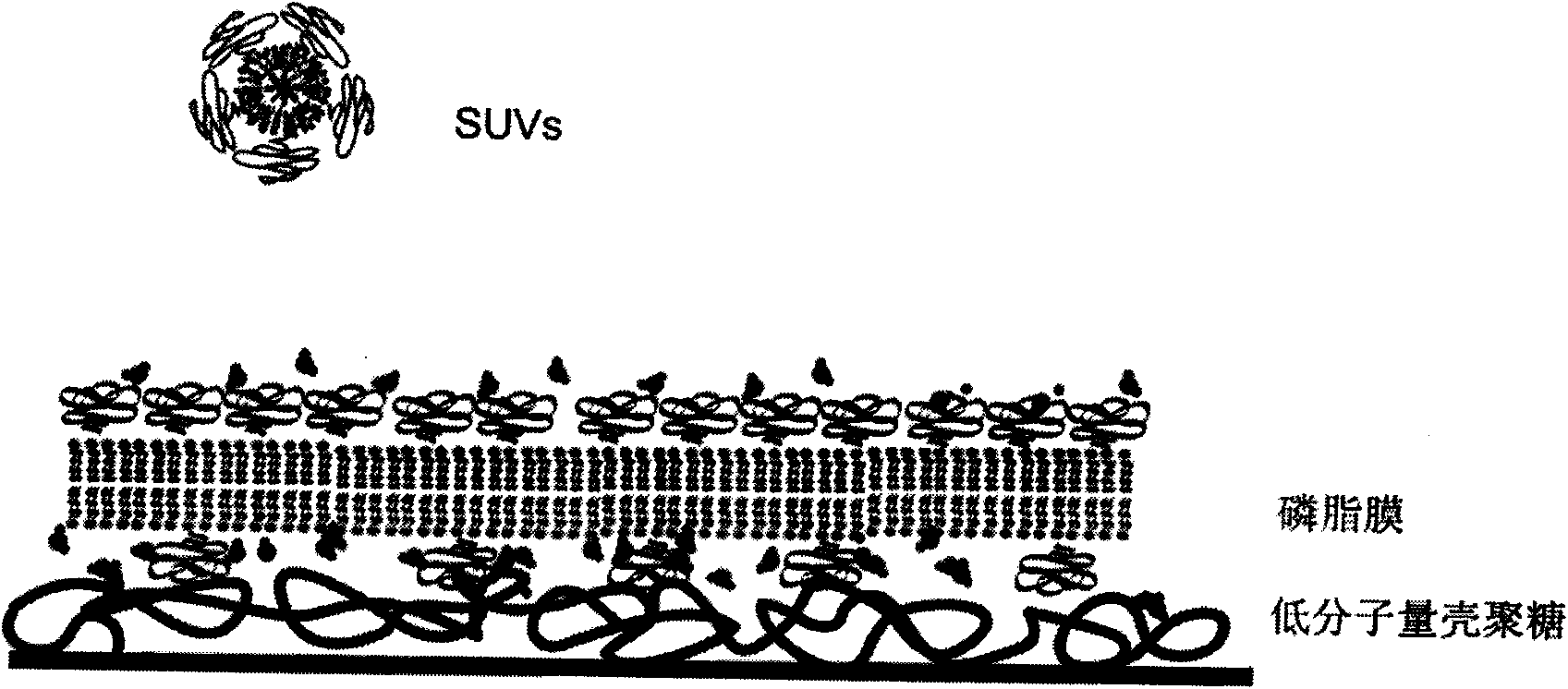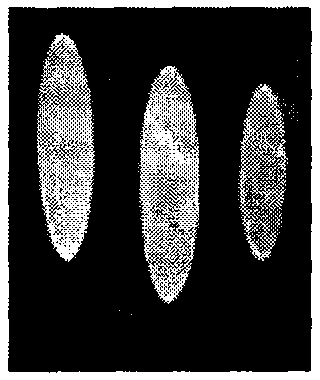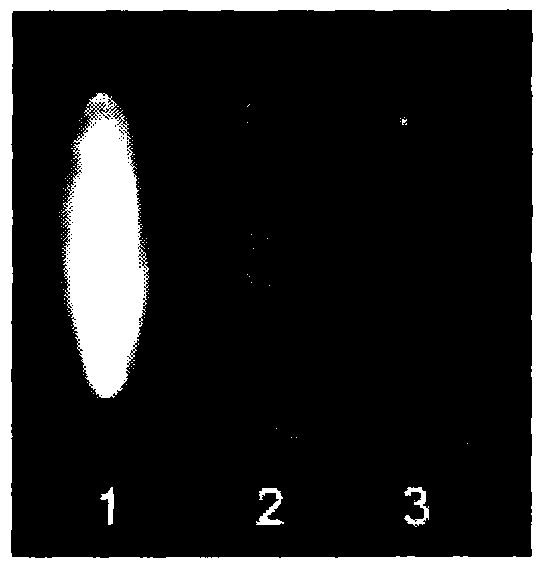Method for modifying air stability phospholipid membrane on solid surface
An air-stable, solid surface technology, applied in the field of surface chemistry and applied chemistry, can solve the problem of inability to modify air-stable phospholipid membranes, and achieve the effects of good air stability, shortened preparation time, and convenient operation.
- Summary
- Abstract
- Description
- Claims
- Application Information
AI Technical Summary
Problems solved by technology
Method used
Image
Examples
Embodiment 1
[0028] Prepare a chloroform solution of 1,2-dimyristoylphosphatidylcholine (1,2-Dimyristoylphophatidylcholine, DMPC), which contains 1,2-distearoyl-glycerol-3-phosphatidylethanolamine-N-carboxyl (polyethylene Diol 2000) (1,2-Distearoyl-sn-Glycero-3-Phosphoethanolamine-N-[Methoxy(Polyethyleneglycol)-2000], DSPE-PEG2000) were 0.1, 0.5, 1.5 mol%, respectively. Blow dry most of the chloroform with nitrogen, then vacuum dry for at least 2 hours to remove residual chloroform and form a phospholipid film on the container wall; add a certain amount of phosphate buffer (pH 7.4) to hydrate the film and make it The final concentration of DMPC was 1 mM. Ultrasonic treatment in a water bath for 30-60 min until the solution was clear; then the solution was extruded with Avanti's MiniExtruder, using a polycarbonate membrane with a pore size of 50 nm, and the number of extrusions was not less than 11.
[0029] Carry out amination modification on the surface of silicon wafers by conventional ...
Embodiment 2
[0033] Prepare a chloroform solution of 1,2-dioleoylphosphatidylcholine (Dioleoylphatidylcholine, DOPC), which contains 1mol% of DSPE-PEG 2000 First, dry most of the chloroform with nitrogen, and then vacuum-dry for at least 2 hours to remove residual chloroform and form a phospholipid film on the container wall; add a certain amount of phosphate buffer (pH 7.4) to hydrate the film, and The final concentration of DOPC was 1 mM. Ultrasonic treatment in a water bath for 30-60 min until the solution was clear; then the solution was extruded with Avanti's MiniExtruder, using a polycarbonate membrane with a pore size of 50 nm, and the number of extrusions was not less than 11.
[0034] The preparation steps of the "chitosan-modified glass surface" are the same as in Example 1.
[0035] The above-prepared small single-walled phospholipid vesicles and the chitosan-modified glass surface are allowed to stand for a reaction, and after 5-10 minutes at room temperature, the unbound exce...
Embodiment 3
[0037] Preparation of 1,2-dilauroylphosphatidylethanolamine (1,2-Dilauroyl-sn-Glycero-3-Phosphoethanolamine, DLPE) in chloroform, containing 2mol% of DSPE-PEG 2000 First, dry most of the chloroform with nitrogen, and then vacuum-dry for at least 2 hours to remove residual chloroform and form a phospholipid film on the container wall; add a certain amount of phosphate buffer (pH 7.4) to hydrate the film, and The final concentration of DLPE was 1 mM. Ultrasonic treatment in a water bath for 30-60 min until the solution was clear; then the solution was extruded with Avanti's MiniExtruder, using a polycarbonate membrane with a pore size of 50 nm, and the number of extrusions was not less than 11.
[0038] The preparation steps of the "chitosan-modified silica surface" are the same as in Example 1.
[0039] The above-prepared small single-walled phospholipid vesicles and the chitosan-modified silicon dioxide surface are allowed to stand for a reaction, and after 5-10 minutes at room...
PUM
| Property | Measurement | Unit |
|---|---|---|
| pore size | aaaaa | aaaaa |
| thickness | aaaaa | aaaaa |
Abstract
Description
Claims
Application Information
 Login to View More
Login to View More - R&D
- Intellectual Property
- Life Sciences
- Materials
- Tech Scout
- Unparalleled Data Quality
- Higher Quality Content
- 60% Fewer Hallucinations
Browse by: Latest US Patents, China's latest patents, Technical Efficacy Thesaurus, Application Domain, Technology Topic, Popular Technical Reports.
© 2025 PatSnap. All rights reserved.Legal|Privacy policy|Modern Slavery Act Transparency Statement|Sitemap|About US| Contact US: help@patsnap.com



